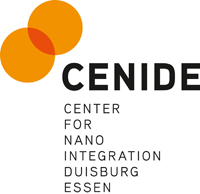Research Project 8
Modeling of precursor chemistry - Development, reduction, and optimization of reaction mechanisms of decomposition and of the combustion of organometallic compounds
The aim of the research unit is to develop scalable processes for gas-phase synthesis of tailored nanoparticles and thus requires a detailed understanding and description of the chemical reaction kinetics and of the particle dynamics. The role of TP8 in the second grant period is further development and optimization of reaction mechanisms for precursor decomposition and combustion (oxidation and interaction with flame reaction kinetics) and to apply them in the context of particle population balance modeling. The foundation and the work-flows required to generate detailed reaction mechanisms for material systems of interest at moderate cost and nearly automated, were developed in the first grant period. Furthermore, the results of the first grant period suggest that a detailed model of the reaction kinetics in a particle forming flame should include reactions which describe formation and consumption of small clusters and early particles, as they could affect the combustion as such. Thus the modeling portfolio of the detailed reaction kinetics simulation will be extended by the population balance modeling of the particle formation, or be coupled with models of particle formation respectively. The formalized and partially automated process of mechanism generation, reduction and optimization will be employed for accurate simulation of the particle synthesis at laboratory scale. The projects TP1 to TP7 in the joint research group focus on experiments and measurements and provide the data which enables the model development in the first instance (in an iterative process of model optimization and verification). Furthermore, TP8 develops and extends methods and models for simulation of the particle dynamics in homogeneous reactors (0D) and in laminar, reacting flows through stream tubes (1D). These developments will complement the 2D/3D simulations in the TP9.
The results of the first grant period also suggest the conclusion that the structure of the laminar, premixed flame consists more than one single particle forming zone. The modeling of such flames requires detailed knowledge about the single steps during the chemical change from a gaseous precursor into condensable intermediates and their evaporation and combustion to primary molecules of the actual product particle. The TP8 will address the development of these models and of corresponding reaction schemes.
Project management
Dr.-Ing. Irenäus Wlokas
University of Duisburg-Essen
Faculty of Engineering
Phone: +49 203 379-8104
E-Mail: i.wlokas@uni-due.de
https://www.uni-due.de/ivg/fluiddynamik/
Prof. Dr.-Ing. Andreas Kempf
University of Duisburg-Essen
Faculty of Engineering
Phone: +49 203 379-8103
E-Mail: andreas.kempf@uni-due.de
http://www.uni-due.de/ivg/fluiddynamik/



